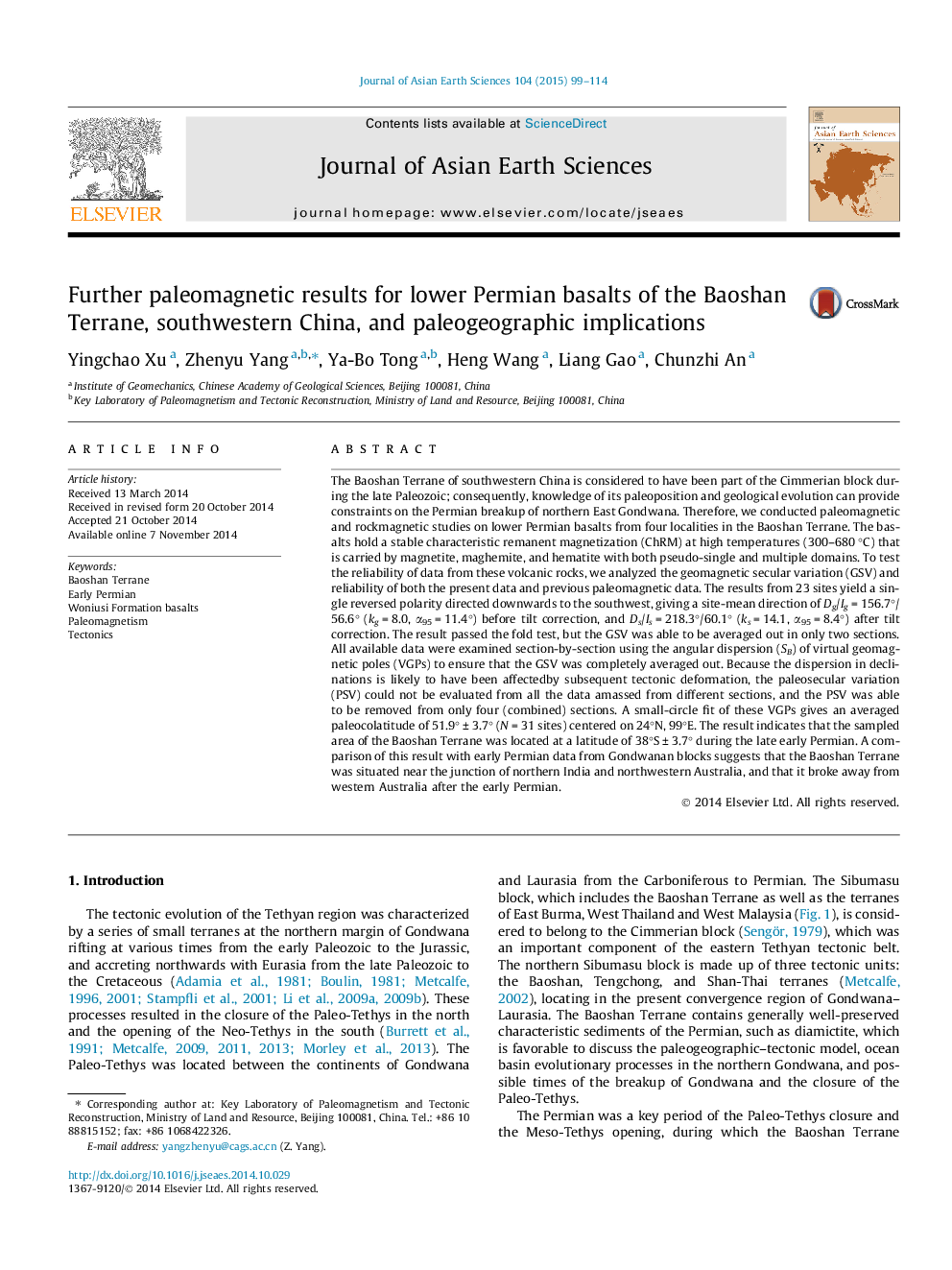| کد مقاله | کد نشریه | سال انتشار | مقاله انگلیسی | نسخه تمام متن |
|---|---|---|---|---|
| 4730301 | 1640365 | 2015 | 16 صفحه PDF | دانلود رایگان |

• Primary magnetization from the Woniusi basalts was obtained in the Baoshan terrane.
• Secular variation analysis and fold test of paleomagnetic data of the Woniusi basalts are performed.
• Paleogeographic reconstruction of the Baoshan terrane and adjacent blocks are presented.
The Baoshan Terrane of southwestern China is considered to have been part of the Cimmerian block during the late Paleozoic; consequently, knowledge of its paleoposition and geological evolution can provide constraints on the Permian breakup of northern East Gondwana. Therefore, we conducted paleomagnetic and rockmagnetic studies on lower Permian basalts from four localities in the Baoshan Terrane. The basalts hold a stable characteristic remanent magnetization (ChRM) at high temperatures (300–680 °C) that is carried by magnetite, maghemite, and hematite with both pseudo-single and multiple domains. To test the reliability of data from these volcanic rocks, we analyzed the geomagnetic secular variation (GSV) and reliability of both the present data and previous paleomagnetic data. The results from 23 sites yield a single reversed polarity directed downwards to the southwest, giving a site-mean direction of Dg/Ig = 156.7°/56.6° (kg = 8.0, α95 = 11.4°) before tilt correction, and Ds/Is = 218.3°/60.1° (ks = 14.1, α95 = 8.4°) after tilt correction. The result passed the fold test, but the GSV was able to be averaged out in only two sections. All available data were examined section-by-section using the angular dispersion (SB) of virtual geomagnetic poles (VGPs) to ensure that the GSV was completely averaged out. Because the dispersion in declinations is likely to have been affectedby subsequent tectonic deformation, the paleosecular variation (PSV) could not be evaluated from all the data amassed from different sections, and the PSV was able to be removed from only four (combined) sections. A small-circle fit of these VGPs gives an averaged paleocolatitude of 51.9° ± 3.7° (N = 31 sites) centered on 24°N, 99°E. The result indicates that the sampled area of the Baoshan Terrane was located at a latitude of 38°S ± 3.7° during the late early Permian. A comparison of this result with early Permian data from Gondwanan blocks suggests that the Baoshan Terrane was situated near the junction of northern India and northwestern Australia, and that it broke away from western Australia after the early Permian.
Journal: Journal of Asian Earth Sciences - Volume 104, 15 May 2015, Pages 99–114